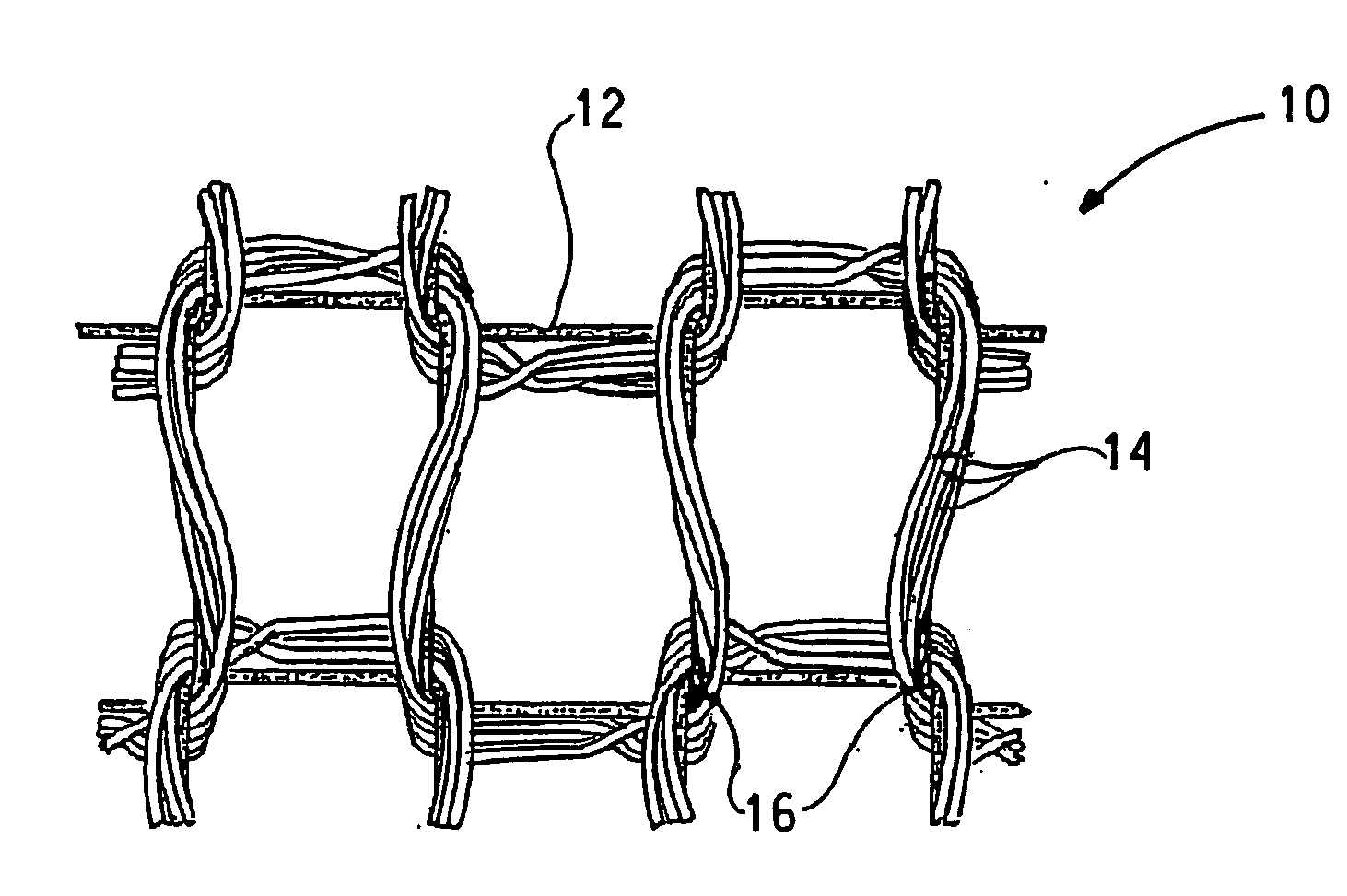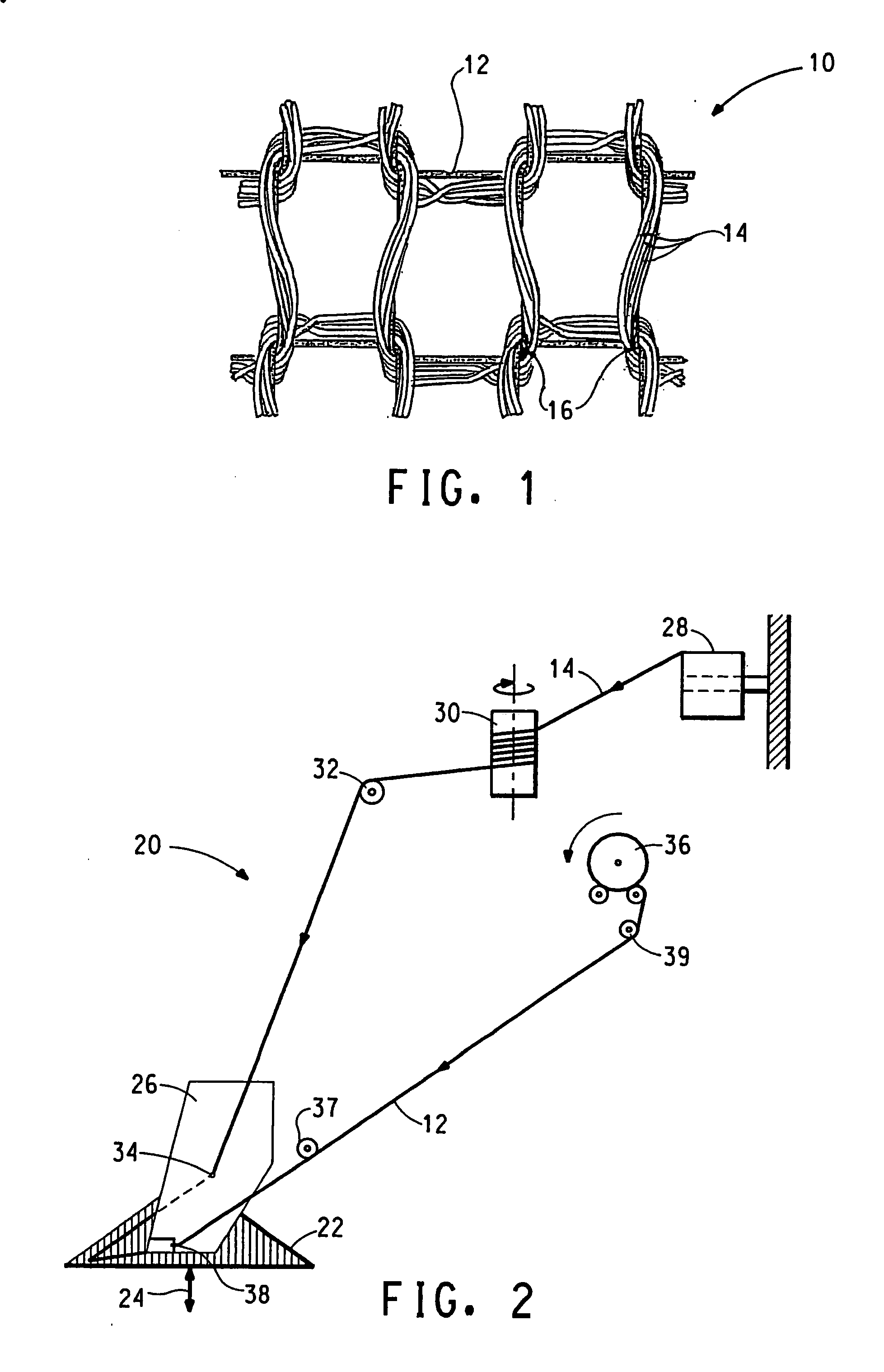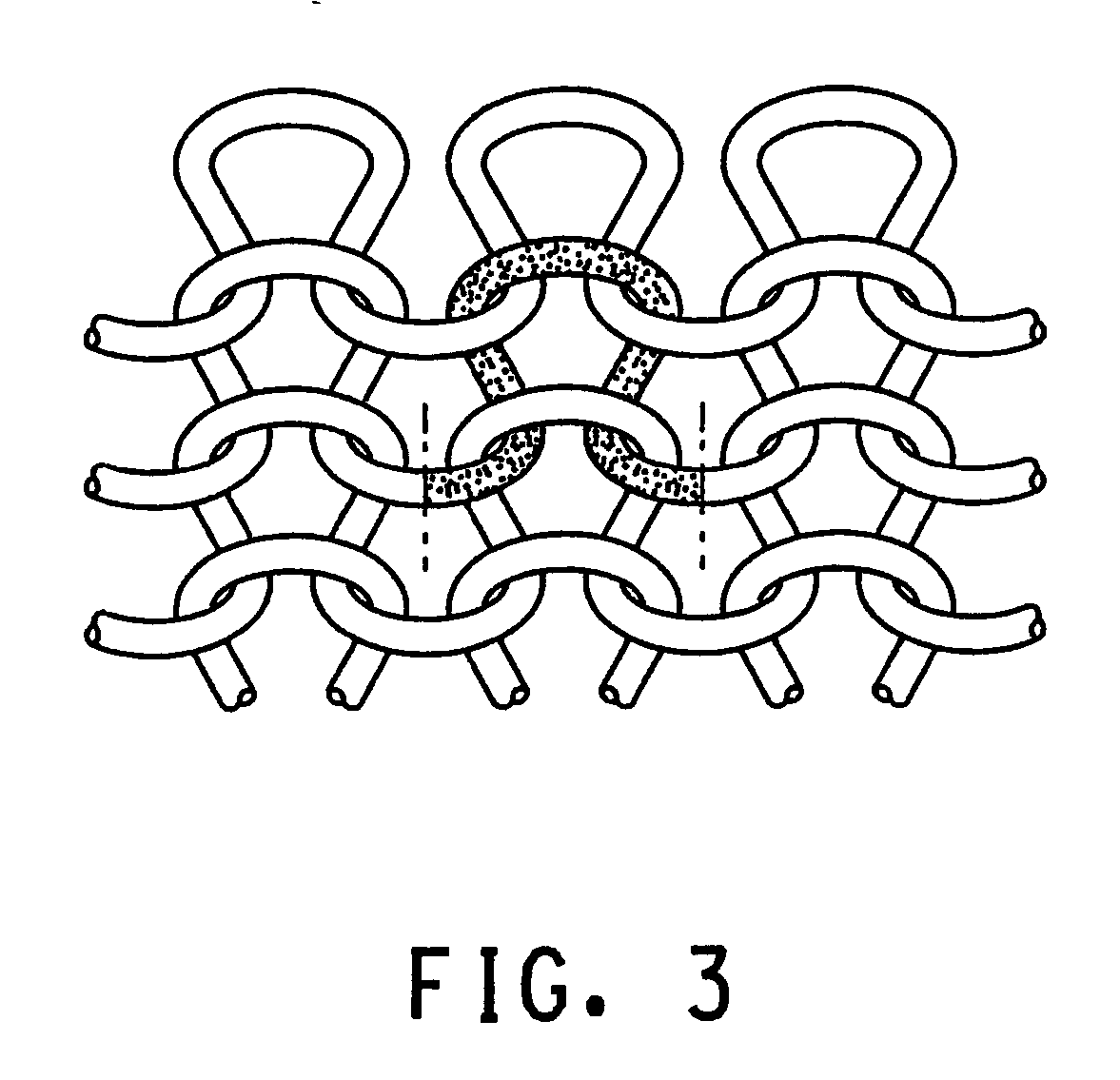Dyed 2GT polyester-spandex circular-knit fabrics and method of making same
a polyester and polyester technology, applied in the field of 2gt polyesterspandex circular-knit elastic fabrics, can solve the problems of environmental problems, add process cost, and relatively inelastic hard yarns, and achieve good azo- and anthraquinone-disperse dye washfastness and desirable physical properties
- Summary
- Abstract
- Description
- Claims
- Application Information
AI Technical Summary
Benefits of technology
Problems solved by technology
Method used
Image
Examples
examples
[0059] The following examples are to be regarded as illustrative in nature and not as restrictive.
[0060] Fabric Knitting and Finishing
[0061] Circular knit elastic single jersey fabrics with bare spandex plated with hard yarn for the examples were knit on a Pai Lung Circular Knitting Machine, Model PL-XS3B / C, with 26 inches cylinder diameter, 24 gauge, and 78 yarn feed positions. The machine was operated at 26 rpm.
[0062] The broken end detector in each spandex feed path (see FIG. 2) was either adjusted to reduce sensitivity to yarn tension, or removed from the machines for these examples. The broken end detector was a type that contacted the yarn, and therefore induced tension in the spandex.
[0063] The spandex feed tension was measured between the spandex supply package 36 and the roller guide 37 (FIG. 2) with a Zivy digital tension meter, model number, EN-10. For examples of the invention, the spandex feed tensions were maintained at 1 gram or less for 20 and 30-denier spandex. ...
examples 1-16
[0081] Table 1 below sets forth the knitting conditions for the example knit fabrics. Lycra® types 169B and 162C were used for the spandex feeds (commercially available from Invista S. a. r. l. of Wichita, Kans. and Wilmington, Del.). Lycra® deniers were 40 and 30, or 44 dtex and 33 dtex, respectively. The stitch length, L, was a machine setting. Spandex feed tensions are listed in grams and 1.00 grams equal 0.98 centiNewtQns(cN).
[0082] Table 2 summarizes the major finishing conditions of the fabrics. Include description of the specifics for each group of fabrics. Examples, A1, A2, B5, B6, C9, C10, D13, and D14 were dyed with middle energy dyes otherwise known in the industry as SE (or C) type dyes. Examples A3, A4, B7, B8, Cl1, C12, D15, and D16 were dyed with high energy dyes otherwise known in the industry as S (or D) type dyes.
TABLE 1KNITTING CONDITIONSHard YarnKnittingLycra ®Lycra ®Type -HardStitchCoverFeedMachineSpandexLycra ®ContinuousYarn# ofDtex perLength,Factor,Tension,...
example a1
[0085] The fabric was knit using 150D / 288f microdenier 2GT polyester and 33 dtex Lycra® spandex. The draft of the spandex in the fabric was 2.5×. The fabric of Example A1 was dyed with a middle energy, SE-rated dye to a blue shade and finished according to the process schematically shown in FIG. 5. The fabric basis weight for Example A1 is 298 g / m2 with acceptable shrinkage. Stain rating to nylon is 3.0.
PUM
| Property | Measurement | Unit |
|---|---|---|
| elongation | aaaaa | aaaaa |
| elongation | aaaaa | aaaaa |
| shrinkage | aaaaa | aaaaa |
Abstract
Description
Claims
Application Information
 Login to View More
Login to View More - R&D
- Intellectual Property
- Life Sciences
- Materials
- Tech Scout
- Unparalleled Data Quality
- Higher Quality Content
- 60% Fewer Hallucinations
Browse by: Latest US Patents, China's latest patents, Technical Efficacy Thesaurus, Application Domain, Technology Topic, Popular Technical Reports.
© 2025 PatSnap. All rights reserved.Legal|Privacy policy|Modern Slavery Act Transparency Statement|Sitemap|About US| Contact US: help@patsnap.com



